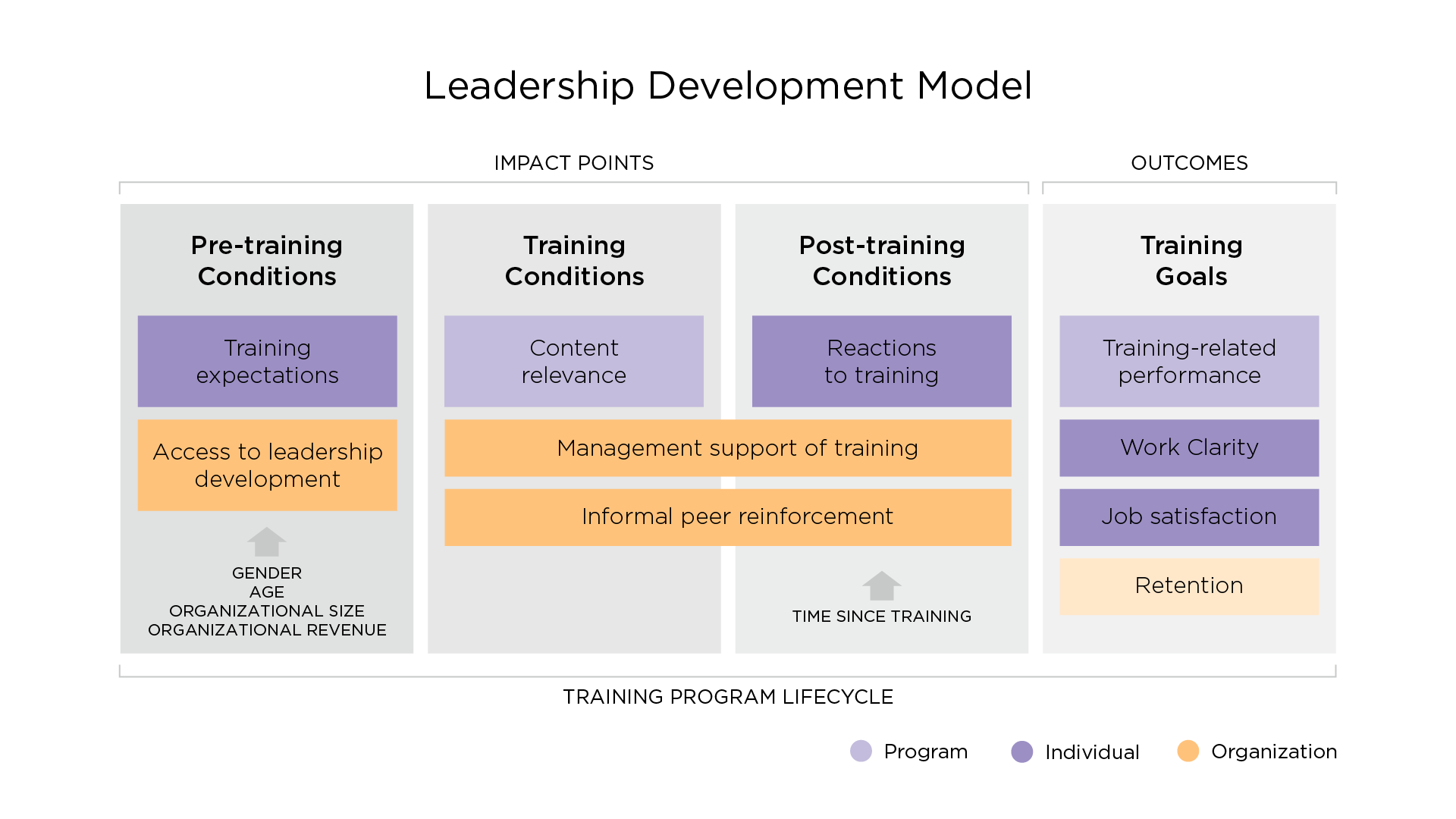
Training Industry’s research-based Leadership Development Model forms the foundation of its Leading Leadership Development certificate program. The model identifies the top factors impacting leadership training outcomes, including the following:
Pre-Training Conditions
Training Industry research identified two pre-training conditions that significantly impact training outcomes: training expectations, or how learners perceive the training going into it, and access to leadership development opportunities, which refers to learners’ perceived opportunities to engage in leadership development within their organization.
To yield positive training outcomes, learning leaders should follow core marketing and branding principles to enhance leaders’ training expectations and actively promote and improve access to leadership training initiatives.
During and Post-Training Conditions
Content relevancy is critical in achieving positive training outcomes; to improve their relevance, leadership training programs should include industry-relevant examples and clearly outline how learners can apply their new knowledge and skills in their roles. Management support also has a significant impact on training outcomes. For example, if executives mandate training, but a learner’s direct manager doesn’t believe it’s necessary or important, the training won’t achieve the impact it’s supposed to. On the other hand, if managers support training initiatives, they’re more likely to be successful.
Informal peer reinforcement also impacts training outcomes, and training professionals should work to formalize informal learning interactions to reinforce training initiatives. For example, after a cohort attends a leadership development training, informal reinforcement could be encouraged by scheduling regular meetings for team members to debrief and discuss how they’re applying the concepts they learned now that they’re back on the job.
Training Industry research also found that learners’ reactions to training — particularly their ratings of the usefulness of training — can impact training outcomes. Typically, learners who report that training was “useful,” rather than “fun” or “enjoyable,” benefit more from training.
Training Outcomes
When each of these pre-training, training and post-training conditions is met, leadership training can improve performance, role clarity (the extent to which one understands his or her role), job satisfaction and retention, among other leadership outcomes.
To learn more about this model and the program it supports, visit the Leading Leadership Development certificate page.
Related Content:
- 6 Elements of a Successful Leadership Development Strategy
- Expert Perspectives on Leadership Development
- How to Develop Leaders: The Importance of Training